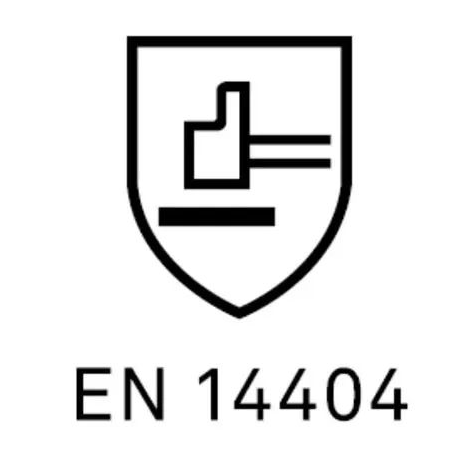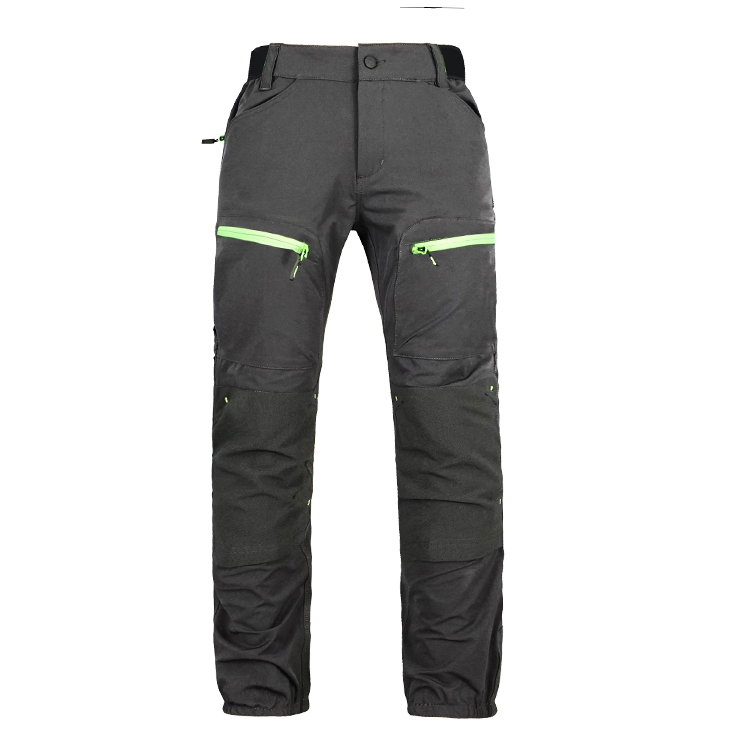Là gì EN14404:2004+A1:2010 tiêu chuẩn?
Quỳ có thể là một tư thế làm việc khó xử. Tuy nhiên, trong một số ngành nghề, nó là cần thiết để ở gần mặt đất trong một thời gian dài. Làm việc với đầu gối mà không bảo vệ có thể nhanh chóng gây khó chịu và gây nguy cơ chấn thương từ các vật cứng hoặc sắc nét trên mặt đất. Ngoài ra, Áp lực liên tục lên đầu gối làm tăng nguy cơ mắc các bệnh mãn tính và tổn thương sụn. Vì thế, Nên cung cấp bảo vệ đầu gối cho tất cả các công việc được thực hiện ở tư thế quỳ. Thiết kế của miếng đệm đầu gối nên làm cho vị trí quỳ thoải mái hơn, Ngăn chặn các đối tượng xâm nhập vào các miếng đệm đầu gối và gây hại cho người dùng, và cố gắng phân phối lực của vị trí quỳ trên một khu vực rộng lớn nhất có thể.

EN14404:2004+A1:2010 là một tiêu chuẩn chứng nhận CE châu Âu được phát triển để đánh giá miếng đệm đầu gối công nghiệp. Kết quả kiểm tra tuân thủ tiêu chuẩn này sau đó sẽ được sử dụng để kiểm tra loại EU bởi các cơ quan được thông báo. EU coi miếng đệm đầu gối là “Thiết kế trung gian” (Lớp học 2) các sản phẩm.
Sự ra đời của 2010 Sửa đổi là thực hiện một số thay đổi đối với các yêu cầu đối với miếng đệm đầu gối. Những thay đổi chính trong tiêu chuẩn là:

1. Bây giờ nó có thể đạt được “0 mức độ” Hiệu suất của kiểm tra thâm nhập, cho phép các miếng đệm đầu gối làm cho công việc thoải mái hơn nhưng không cung cấp bảo vệ
Yêu cầu chiều rộng đối với dây đai đầu gối đã giảm từ 40mm xuống 30 mm, Điều đó có nghĩa là dây đai không có khả năng được đặt ở phía sau đầu gối
3. Cho miếng đệm đầu gối tuyên bố là “Một kích thước phù hợp với tất cả”, chu vi vòng eo của 1000 milimet hiện được sử dụng thay vì bản gốc 1200 milimet.
Có bốn loại miếng đệm đầu gối được xác định trong EN14404:2004+A1:2010:
“Loại 1” – độc lập với quần áo khác, được bảo đảm cho chân bằng dây đai
“Loại 2” – đặt trong túi chân quần hoặc cố định vĩnh viễn trên quần, với miếng đệm đầu gối cố định hoặc có thể điều chỉnh ở vị trí
“Loại 3” – thường ở dạng miếng đệm quỳ, được thiết kế để được đặt trên sàn trong khi người dùng đang đi bộ xung quanh
Kiểu 4- Kết hợp với các thiết bị khác, Nó có các chức năng bổ sung như hỗ trợ đứng hoặc quỳ ghế.

Trong quá trình kiểm tra sức cản thâm nhập, Biến dạng của bề mặt bên trong của miếng đệm đầu gối không được vượt quá 5 mm khi bất kỳ mức lực nào sau đây được áp dụng:
Mức độ 1 Yêu cầu miếng đệm đầu gối để chịu được lực 100n
Mức độ 2 Yêu cầu miếng đệm đầu gối để chịu được lực lượng 250N.
Các 2010 Sửa đổi cho phép các nhà sản xuất tuyên bố mức độ 0 Trong thử nghiệm thâm nhập nếu họ không đạt được lực lượng cần thiết cho cấp độ 1. Vì thế, Tấm đệm đầu gối chỉ phù hợp với bề mặt phẳng và cần phải chỉ ra trong thông tin người dùng rằng chúng không cung cấp bảo vệ thâm nhập.
EN14404:2004+A1:2010 cũng đưa ra nhiều yêu cầu cho phạm vi bảo vệ, hạn chế, và công thái học. Phạm vi bảo vệ của miếng đệm đầu gối nên có kích thước nhất định, Tùy thuộc vào chu vi vòng eo người dùng dự kiến. Sau đó sử dụng các kích thước này làm khu vực để tiến hành kiểm tra hiệu suất bảo vệ. Kiểm tra ràng buộc được thực hiện trên loại 1 và loại 2 miếng đệm đầu gối. Kiểu 1 Tấm đệm đầu gối thường bao gồm các dải đàn hồi phải có khả năng được thắt chặt hoàn toàn để ngăn chặn sự di chuyển quá mức. Để tránh các vấn đề đi xe đạp, Họ cũng cần thích nghi với những thay đổi về hình đầu gối khi người đeo quỳ xuống.
Bài kiểm tra dây đeo bao gồm thử nghiệm hạn chế 10N (được tiến hành ở trên và dưới đầu gối để đảm bảo không có chuyển động quá mức) và kiểm tra tuân thủ dây đeo, đòi hỏi dây đeo để kéo dài ít nhất 40mm khi chịu lực dưới 10N, chiều rộng của dây đeo vai cũng phải ít nhất 30 milimet. Kiểu 2 miếng đệm đầu gối thường được đặt trong túi kín và không yêu cầu kiểm tra hạn chế trừ khi chúng được bảo đảm tại chỗ bằng cách sử dụng các phương pháp khác nhau.
Cuối cùng, Chúng tôi đã tiến hành các bài kiểm tra công thái học trên các miếng đệm đầu gối để đánh giá sự thoải mái của chúng và xem liệu chúng có duy trì tại chỗ trong quá trình sử dụng. Các đối tượng đi bộ cho 15 phút, trong thời gian họ cần quỳ mười lần, Mỗi lần trong năm phút, và mỗi lần cho 10 mét để xáo trộn các thẻ.

Yêu cầu cho từng loại miếng đệm đầu gối trong en 14404:2004+A1:2010:
| Yêu cầu | Các loại bảo vệ áp dụng cần thiết |
| Kiểm tra vô hại (Theo En 340) | Tất cả các loại |
| Tên kích thước, đánh dấu, kích cỡ, và phạm vi bảo vệ | Tất cả các loại |
| Kháng xâm nhập (Cấp 0 = N/A., Cấp 1 = 100n) | Tất cả các loại |
| Cấp 2 = 250n) | |
| Phân phối lực (Lực ghi âm nhỏ hơn 30N) | Tất cả các loại |
| Lực truyền tải cực đại trong tác động | Tất cả các loại |
| (Lực cao nhất<4KN, lực trung bình<3KN) | |
| Hạn chế thông qua dây đai hoặc các phương thức kết nối khác | Kiểu 1 và loại 2 (Kiểu 4, Nếu có) |
| (Kiểu 1 nên được kiểm tra ở lực 10n, Kiểu 2 nên được đặt trong túi hoặc thử nghiệm ở mức 100n) | |
| Công thái học (Đánh giá hơn 15 phút) | Tất cả các loại |
| Tuân thủ dây đai (dây đai phải được kéo dài 40mm dưới một lực dưới 10N mỗi dây đeo) | Kiểu 1 (Kiểu 4, Nếu có) |
Miếng đệm đầu gối công nghiệp được coi là “Ii” PPE và trải qua kiểm tra loại EU dựa trên EN 14404:2004+A1:2010.
www.allflychina.com
Tất cả đội bay
4Th.April., 2024

